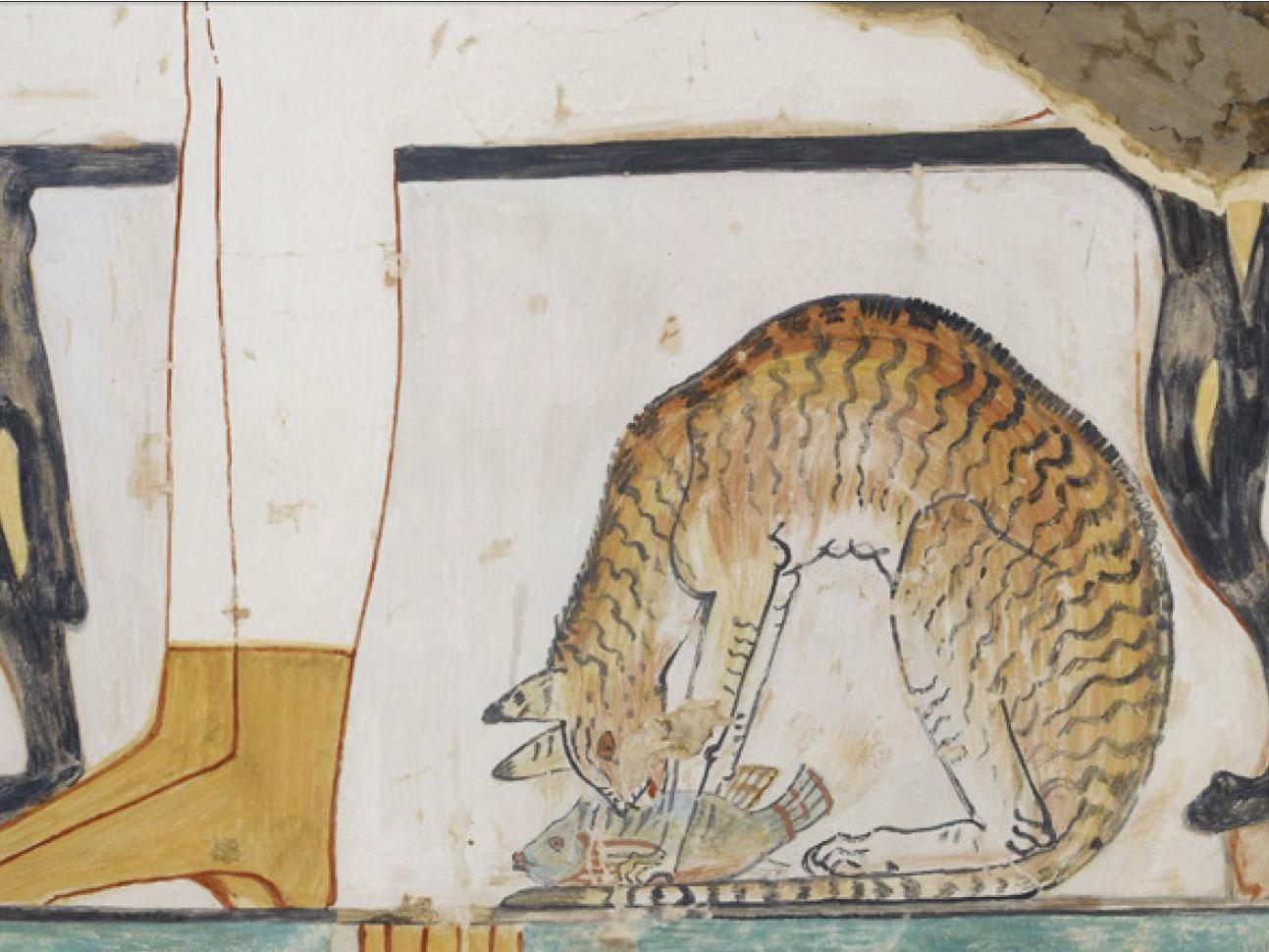How Ancient Egypt’s beloved cats helped our feline friends colonise the planet
The domestic cat originated in the Near East about 10,000 years ago but it was the ‘very popular’ Ancient Egyptian version that really took off, genetic study finds

The domestic cat has proved to be one of the most successful animals on the planet, managing to capitalise on its close relations with humans to colonise every continent except Antarctica.
Now scientists have discovered that many of today’s Felis silvestris lybica are descended from cats who lived thousands of years ago in Ancient Egypt.
Using genetic analysis, the researchers established that cats were first domesticated in the Near East about 10,000 years ago, probably by farmers because of feline skills in dealing with mice and other rodents that raid grain stores. A complete cat skeleton dated to 7,500BC was found associated with a human burial site on the island of Cyprus.
However, it was not until several thousand years later that cats really began the journey that would take them to every corner of the globe.
In Ancient Egypt, cats and humans developed a remarkably close relationship as shown by numerous depictions in art from around 2,000BC.
And it appears something about these Egyptian cats made them particularly appealing and they started to spread into Europe.
“The increasing popularity of cats among Mediterranean cultures and particularly their usefulness on ships infested with rodents and other pests presumably triggered their dispersal across the Mediterranean,” the researchers wrote in the journal Nature Ecology & Evolution.
“Indeed, depictions of cats in domestic contexts, already frequent during the New Kingdom in Egypt around 1500BC, [such as] ‘cat under the chair’, are found on Greek artefacts from as early as the end of the 6th century BC.
“The Egyptian cat must have been very popular, as [two different strains] represented more than half of the maternal lineages in Western Anatolia during the 1st millennium AD, and occurred twice as frequently as the local [strain].
“This suggests that the Egyptian cat had properties that made it attractive to humans, presumably acquired during the tightening of the human-cat relationship that developed during the Middle and New Kingdoms [of Egypt] and became even stronger afterwards.”
The researchers said the most pronounced genetic changes that distinguish wild from domestic cats were “apparently linked to behaviour” – something that anyone who has met a Scottish wildcat would readily confirm.
“It is tempting to speculate that the success of the Egyptian cat is underlain by changes in its sociability and tameness,” they wrote in the paper.
Domestic cats appeared north of the European Alps “soon after the Roman conquest” but are thought to have been absent from outside the Empire until it started to collapse.
Feline expansion then received another boost from sailors.
“In medieval times it was compulsory for seafarers to have cats onboard their ships, leading to their dispersal across routes of trade and warfare,” the researchers wrote.
“This evidence explains, for example, the presence of [a cat with an Egyptian lineage] at the Viking port of Ralswiek, dated between the seventh and 11th century AD.”
The same boats also spread black rats and house mice in significant numbers which “probably also encouraged cat dispersal for the control of these new pests”.
Summing up their findings, the international team of scientists, led by Belgian paleogeneticist Claudio Ottoni, wrote that “both the Near Eastern and Egyptian populations of Felis silvestris lybica contributed to the gene pool of the domestic cat at different historical times”.
“While the cat’s worldwide conquest began during the Neolithic period in the Near East, its dispersal gained momentum during the Classical period, when the Egyptian cat successfully spread throughout the Old World,” they said.
Join our commenting forum
Join thought-provoking conversations, follow other Independent readers and see their replies
Comments